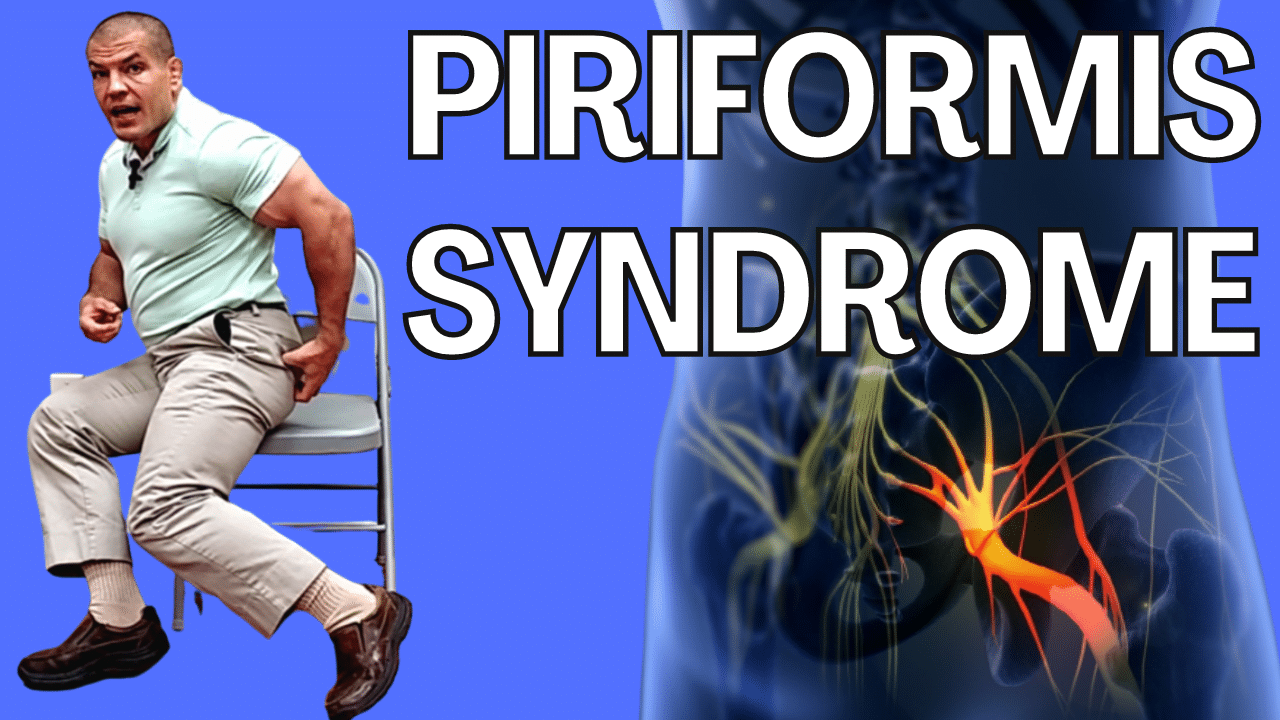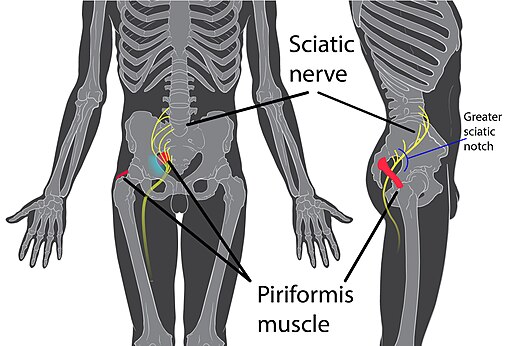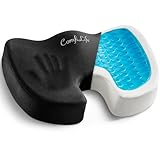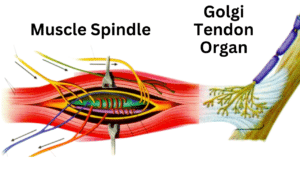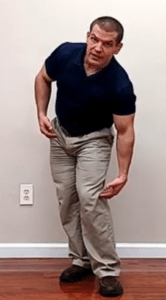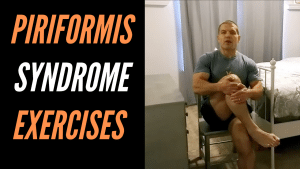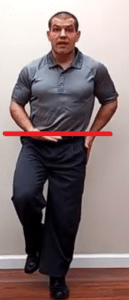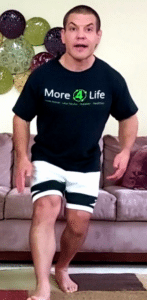Piriformis Syndrome can be a real pain in the butt — quite literally.
There's a lot of confusion between the terms piriformis syndrome, sciatica, and SI joint dysfunction.
Watch the video to learn what cause piriformis syndrome, what kinds of piriformis syndrome treatment to avoid, and what to do instead so that you actually get relief from your piriformis syndrome pain.

What Is Piriformis Syndrome?
Piriformis Syndrome is a compression of your sciatic nerve in a muscle in your butt called the piriformis.
The piriformis gets a really bad rap. That's because in a very small percentage of the population (10 to 20 percent), the sciatic nerve pierces through the piriformis.
Therefore, the piriformis has become a scapegoat for many causes of sciatica.
That's particularly true when you have sciatica that just goes from your buttock down the leg and you don't actually have back pain.
In most cases though, sciatica is caused by a problem in your back. The nerve roots that make up the sciatic nerve get pinched and send pain down into your buttock or down into your leg. You might not actually have back pain though.
So if you have sciatica, assume that it's coming from your back unless you can rule that out.
Learn 7 causes of sciatica here.
For this particular article though, we'll focus on the piriformis syndrome cause of sciatica.
True Piriformis Syndrome
A true piriformis syndrome is when the sciatic nerve is compressed at the piriformis causing symptoms down the leg.
If your piriformis is tight and stiff, and you're just having pain in your buttock or at your SI joints, that's not necessarily piriformis syndrome per se.
Your piriformis can pull on your SI joint and cause buttock pain.
Symptoms Of Piriformis Syndrome
Symptoms of piriformis syndrome include
- pain sitting on hard surfaces
- standing up usually will relieve pain
- direct pressure over the piriformis reproduces leg symptoms
Piriformis Syndrome Treatments To Avoid
Some piriformis syndrome treatments include:
- sitting on a tennis ball underneath the piriformis
- stretching the piriformis
- using a foam roller on the piriformis
- getting injections in the piriformis
But you don't want to keep mashing on your piriformis or stretching your piriformis.
Why is that?
Well, let's think about how piriformis syndrome is caused in the first place.
What Causes Piriformis Syndrome?
Piriformis syndrome isn't usually caused by sitting.
It's likely that you've been sitting for years and years and years before your piriformis syndrome started, so why did it just now start to build up?
Well, most of the time, piriformis syndrome is caused by a problem when you're standing and when you're walking.
Then why does piriformis syndrome hurt more when more when you're sitting?
Well, because after you've inflamed the sciatic nerve at your buttock and you sit on it, particularly on a hard surface like a chair, it irritates that nerve that's already become irritated.
To use an analogy, imagine you went to the beach and fell asleep laying on your belly, and your bottom got sunburned.
Well, when you go home and you sit down on a chair, it's probably going to hurt.
But the problem isn't the sitting on the chair. The problem is that your bottom is sunburned and you're sitting and putting pressure on it.
So, the nerves have become irritated in the skin in that example or in the sciatic nerve in the case of piriformis syndrome, but the problem isn't actually the sitting.
Using a donut pad or seat cushion, sitting on softer surfaces, or just avoiding long periods of sitting can be good in the short term to avoid provoking the problem.
ComfiLife Gel Enhanced Seat Cushion – Of...
25% OffBut how do you fix the long-term problem which was caused by something else?
Well, largely when you have piriformis syndrome, the piriformis is in spasm.
But stretching it also isn't a good idea because a muscle spasms up because it's trying to protect itself.
You've got two different receptors in a muscle that regulate its tension.
One is called the muscle spindle, which makes the muscle contract when it's gotten overstretched.
Think of that like the knee-jerk reflex at the doctor's office where they hit your patellar tendon. It stretches quickly, changes length quickly, and the muscle contracts or shortens to protect that muscle from becoming injured.
On the opposite side of that, you've got another receptor called the Golgi tendon organ. That receptor is responsible for sensing tension.
If a muscle gets too stiff or there's too much tension in a muscle, that Golgi tendon organ will make the muscle relax because too much tension in the muscle can also injure it.
The muscle spindle and the Golgi tendon organ work on opposite ends of the spectrum.
If you're stretching a muscle that's already in spasm, all you're doing is further sensitizing that muscle spindle, which actually makes the spasm worse.
What Piriformis Syndrome Treatments To Do
One piriformis syndrome treatment to decrease tension in the muscle is just applying a gentle pressure to it.
Not necessarily your whole body weight like sitting on a tennis ball.
There two reasons for that.
If you put the tennis ball right in your sciatic notch where the sciatic nerve runs, you're just mashing down on an already irritated sciatic nerve, which just makes it more irritated.
Even if you put it more on the ends, like by your butt bone and not quite on the sciatic notch, if you put too much pressure than is comfortable, that can also lead to further muscle spasm.
So, what you need is very gentle pressure.
That may come in the form of a massage therapist or a physical therapist. You may use a massage gun lightly over that area.
But again, you don't want to mash it and beat it as hard as you can.
Sometimes that "good pain" feels good at the moment because you think, "Oh, that's really getting to the right spot." But it may not really be helpful in the long term.
So, gentle pressure over the muscle can help relax that muscle by activating the Golgi tendon organ and making the muscle relax.
What Piriformis Syndrome Treatment To Do For Long Term Relief?
Now, in the long term, you still have to fix the root cause of the problem, which in many cases is weak hip muscles.
When you're walking, the piriformis is a hip external rotator, meaning it turns your knee outward. It also prevents your leg from going into internal rotation.
So, if you have weak hip external rotators, when you walk and take a step, your knee goes inward, and your foot pronates.
This movement we call a dynamic valgus.
When you get that hip internal rotation, it stretches the piriformis.
And it does that 3,000-10,000 steps per day depending on how much you walk.
So, if you you're repeatedly over-lengthening your piriformis you're sensitizing the muscle spindle. As a result, the muscle spindle makes the muscle spasm and tighten up to protect itself.
So, when you go to stretch it, that just further sensitizes the muscle spindle.
Even if it's a tight muscle, you don't necessarily want to overstretch it. If the muscle's already over-stretched from being repeatedly over-stretched through walking, you definitely don't want to stretch it.
How To Stretch The Piriformis Correctly
After you've done your soft tissue release by putting gentle pressure, it is okay to do gentle stretches of your piriformis.
Stretches should not be to the point of pain. You should just feel a very gentle stretch.
And, you should only stretch if you have a limited range of motion. Learn how to tell if you have a stiff piriformis here.
But again, in the long term, you want to get the hip external rotators stronger so that you don't over-pronate when you're walking or running.
Piriformis Syndrome Strengthening Exercises
One of the best ways to strengthen your hip external rotators is just practicing standing on one leg, keeping your knee turned outward and your pelvis level with the ground.
If you're a runner or you've already mastered standing on one leg, you can start to add little mini one-legged squats in while still keeping that hip external rotation.
But what if your Piriformis Syndrome has gotten so bad that it hurts even just to put weight on that leg?
Well, in that case, you can start with non-weight-bearing exercises such as the clamshell.
It's a very common exercise, but I'd say 95 percent of people that I see do it wrong.
Learn how to do the clamshell correctly.
So, those are some effective piriformis syndrome treatments that you can do if you have a compression of the sciatic nerve at the piriformis.
Need Piriformis Syndrome Treatment?
If you live in the St. Louis area an need treatment for piriformis syndrome, just tap the button below to request an appointment with one of our specialists.
Like this post? Here are a few others you might enjoy.
Spinal Stenosis And Walking Problems
Numbness In Fingers? 6 Causes of Tingling In Hands

